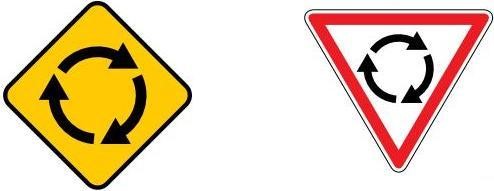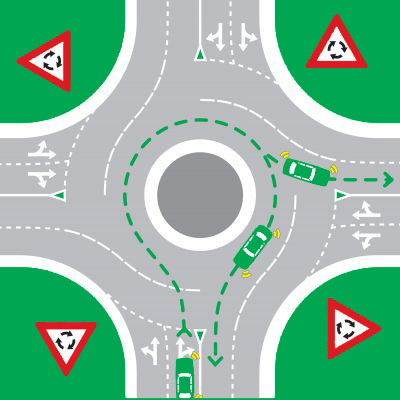I haven't written a blog about roundabouts and I'm not going to start now.
There is a huge amount of uncertainty about roundabouts, I have selected a few resources and placed links here to help you iron out the confusion. There is loads of information online about roundabouts use information sparingly and make sure the information you are looking at, is Australian/NSW appropriate.
As always if you still need help drop me a message.
Using roundabouts
Roundabouts manage the traffic flow at intersections. They move traffic in one direction around a central island. Vehicles can turn left or right, go straight ahead, or make a full turn (U-turn).
When you approach a roundabout, you must slow down or stop to give way to all vehicles already in the roundabout.
This means giving way to vehicles already in the roundabout on your right, and vehicles that have entered the roundabout from your left or from directly opposite you.
So other drivers know what you intend to do, you must indicate when turning at a roundabout. Continue to indicate as you turn. When you leave, you must indicate left, if practical. Stop indicating as soon as you have left the roundabout.
On multi-lane roundabouts, you must follow the direction of the arrows or signs on the road.
The roundabout sign means Slow Down, prepare to Give Way and if necessary stop to avoid a collision.
So, as you're approaching a roundabout, you must get into the correct lane, indicate if turning, and give way to traffic already on the roundabout.
Enter the roundabout when there is a safe gap in the traffic.
The sign on the left shows when there is a roundabout ahead. The sign on the right shows when to give way to vehicles on the roundabout.

Signaling
You must indicate for long enough to give sufficient warning to other drivers and pedestrians before entering a roundabout when turning left or right. 30 mtrs
Giving way
Approaching a roundabout:
1. Check for oncoming traffic turning right
2. Check for vehicles entering from the right
3. Enter the roundabout when there is a safe gap in the traffic.
4. Check for vehicles entering from the left
5. Indicate left to exit
As you enter the roundabout check for vehicles entering from the left
Giving way at a roundabout: means the driver must slow down and if necessary, stop to avoid a collision.
When entering, you must give way to all vehicles, including bicycles, already on the roundabout. So slow down or stop if necessary. Only enter when there is a safe gap.
You must also indicate, if practicable, on exit when going straight ahead. That way, people around you know exactly where you’re headed.
Receive 10% off your first 90 minute driving lesson when you book online. Use the coupon code 10%OFF when booking. I look forward to seeing you soon.
Book now
Road rules: roundabouts